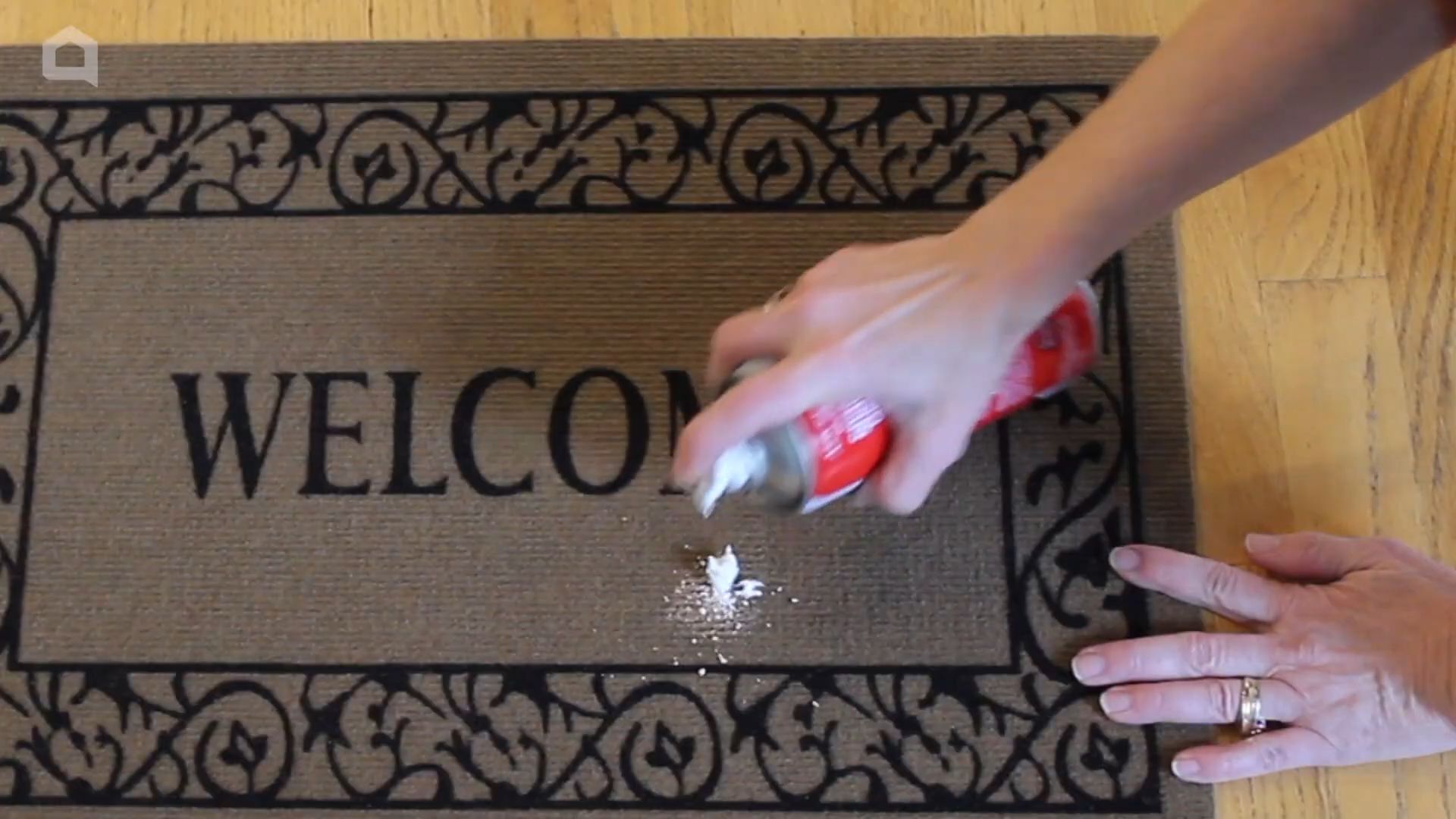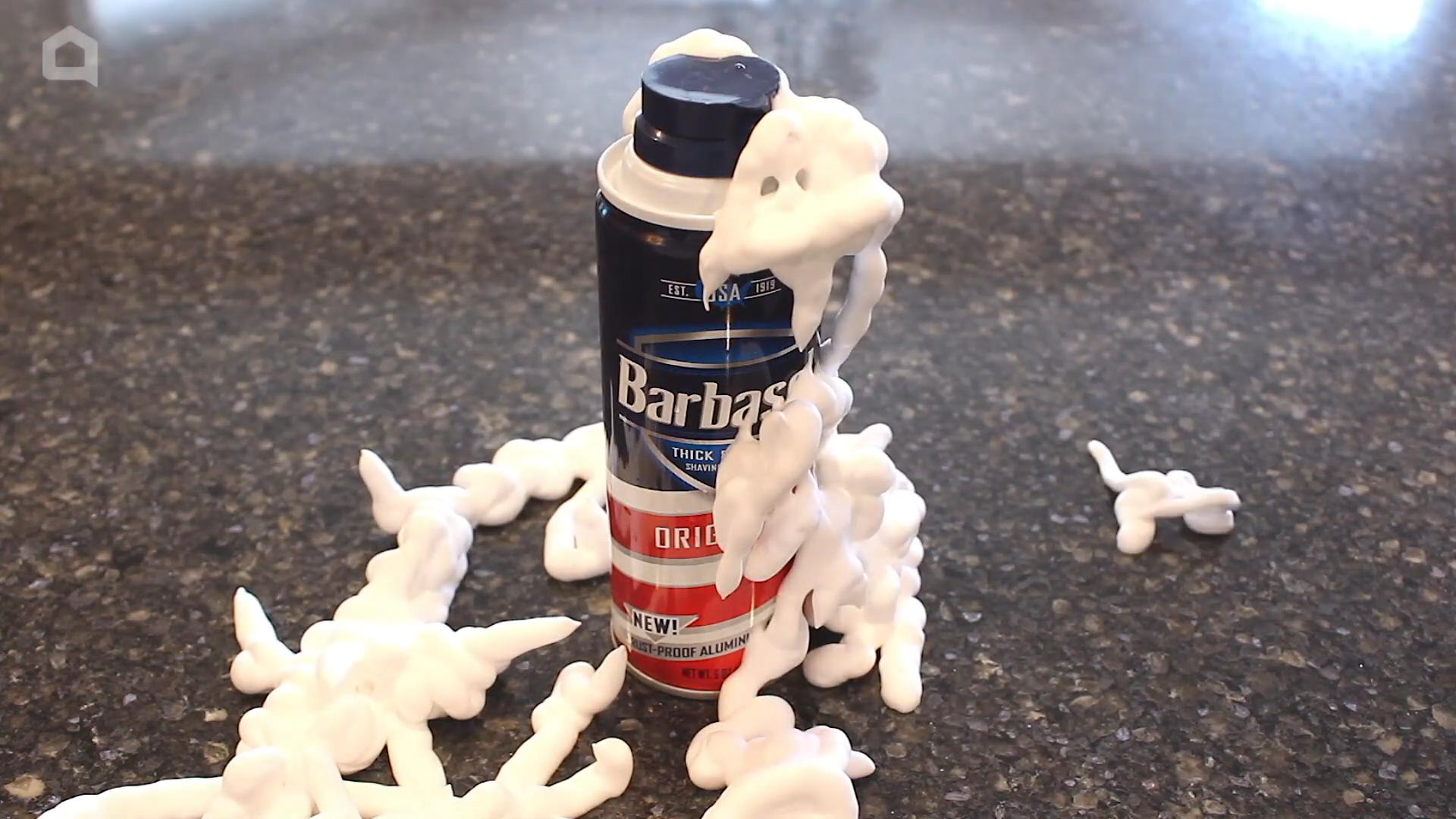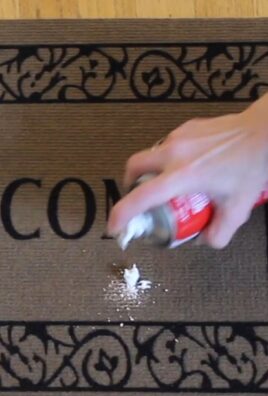Shaving Cream Cleaning Hacks: Who knew that fluffy white foam you use for a smooth shave could be your secret weapon against household grime? I’m always on the lookout for clever, budget-friendly ways to keep my home sparkling, and let me tell you, this one’s a game-changer! Forget those harsh chemicals and expensive cleaners – shaving cream is here to revolutionize your cleaning routine.
While shaving cream’s primary purpose is for grooming, its cleaning potential is no secret to savvy homemakers. Think about it: it’s designed to soften and lift, making it perfect for tackling stubborn stains and grime. This isn’t some newfangled trend; resourceful individuals have been using alternative cleaning methods for generations, often relying on readily available household items.
In today’s world, we’re all looking for ways to save money and reduce our environmental impact. That’s where these shaving cream cleaning hacks come in. From shining your bathroom mirrors to removing carpet stains, the possibilities are endless. I’m excited to share these simple yet effective tricks that will not only save you time and money but also leave your home smelling fresh and clean. Get ready to unlock the surprising cleaning power of shaving cream!

DIY Floating Shelves: A Step-by-Step Guide
Hey there, fellow DIY enthusiasts! I’m so excited to share this project with you – building your own floating shelves. They’re stylish, space-saving, and surprisingly easy to make. Plus, the satisfaction of saying “I made that!” every time you look at them is priceless. Let’s get started!
What You’ll Need
Before we dive in, let’s gather all the necessary materials and tools. Trust me, having everything ready beforehand will make the process much smoother.
* **Lumber:** This is the most important part! I recommend using solid wood for a sturdy shelf. Pine, poplar, or even reclaimed wood are great options. The dimensions will depend on the size of shelves you want. For this guide, let’s assume we’re making shelves that are 36 inches long, 8 inches deep, and 1.5 inches thick. You’ll need enough lumber for the shelf itself and the internal support structure.
* **Metal Rods or Dowels:** These will be the “floating” part! I prefer using metal rods (around 1/2 inch diameter) because they’re stronger and less likely to bend over time. You’ll need at least two rods per shelf, but for longer shelves, I recommend three or even four for extra support. The length of the rods should be slightly longer than the depth of your shelf (around 9-10 inches).
* **Wood Glue:** A good quality wood glue is essential for creating strong bonds between the different parts of the shelf.
* **Screws:** You’ll need wood screws of various lengths (1 inch, 1 1/4 inch, and 2 inch) to secure the internal support structure.
* **Wood Filler (Optional):** If you’re using reclaimed wood or want to hide any imperfections, wood filler is your best friend.
* **Sandpaper:** Various grits (80, 120, 220) for smoothing the wood.
* **Stain or Paint:** To give your shelves the desired finish.
* **Polyurethane or Varnish (Optional):** For added protection and durability.
**Tools:**
* **Drill:** With various drill bits, including a bit that matches the diameter of your metal rods.
* **Stud Finder:** Absolutely crucial for securely mounting the shelves to the wall.
* **Level:** To ensure your shelves are perfectly horizontal.
* **Measuring Tape:** For accurate measurements.
* **Pencil:** For marking measurements.
* **Saw:** To cut the lumber to the desired dimensions. A miter saw is ideal, but a hand saw will also work.
* **Clamps:** To hold the pieces together while the glue dries.
* **Safety Glasses:** Always protect your eyes!
* **Dust Mask:** To avoid inhaling sawdust.
* **Sanding Block or Orbital Sander:** For sanding the wood.
* **Paintbrushes or Rags:** For applying stain or paint.
Building the Shelf Structure
This is where the magic happens! We’ll be creating the hollow core of the shelf and the internal support structure that will hold the metal rods.
1. **Cut the Lumber:** Using your saw, cut the lumber into the following pieces:
* **Top and Bottom Pieces:** Two pieces, each 36 inches long and 8 inches wide.
* **Front Piece:** One piece, 36 inches long and 1.5 inches wide.
* **Side Pieces:** Two pieces, 8 inches long and 1.5 inches wide.
* **Internal Support Pieces:** These will depend on how many metal rods you’re using. For three rods, cut three pieces of lumber that are 6 inches long and 1.5 inches wide. These pieces need to fit snugly inside the shelf.
2. **Assemble the Box:** Now, let’s create the outer shell of the shelf. Apply wood glue to the edges of the side pieces and attach them to the top and bottom pieces, forming a rectangular box. Clamp the pieces together and let the glue dry completely (at least 2-3 hours, or preferably overnight). Make sure everything is square before the glue sets. I like to use a carpenter’s square for this.
3. **Attach the Front Piece:** Apply wood glue to the front edges of the top, bottom, and side pieces. Attach the front piece to the box, creating a closed front. Clamp everything together and let the glue dry completely.
4. **Prepare the Internal Support Pieces:** These pieces will be crucial for supporting the weight of the shelf and whatever you place on it. On each support piece, mark the center point along its width. This is where you’ll drill the holes for the metal rods.
5. **Drill Holes for the Metal Rods:** Using your drill and the drill bit that matches the diameter of your metal rods, drill a hole through the center of each support piece. Make sure the holes are straight and aligned.
6. **Install the Internal Support Pieces:** This is a bit tricky, but take your time and it’ll be fine. Apply wood glue to the edges of the support pieces and carefully slide them into the shelf. The support pieces should be evenly spaced along the length of the shelf. I usually place one near each end and one in the middle. Use screws to secure the support pieces to the top and bottom of the shelf. Pre-drilling pilot holes will prevent the wood from splitting.
Sanding and Finishing
Now that the shelf structure is complete, it’s time to smooth it out and give it a beautiful finish.
1. **Sanding:** Start with 80-grit sandpaper to remove any rough edges or imperfections. Then, move on to 120-grit sandpaper to further smooth the surface. Finally, use 220-grit sandpaper for a super smooth finish. Remember to sand with the grain of the wood.
2. **Wood Filler (Optional):** If you have any gaps or imperfections, apply wood filler and let it dry completely. Then, sand it smooth.
3. **Staining or Painting:** Choose your desired stain or paint color and apply it evenly to the shelf. Follow the manufacturer’s instructions for application and drying times. I personally love using a stain to bring out the natural beauty of the wood.
4. **Polyurethane or Varnish (Optional):** For added protection and durability, apply a coat of polyurethane or varnish. This will help protect the shelf from scratches and moisture. Let it dry completely.
Mounting the Shelves
This is the final step! We’ll be mounting the shelves to the wall using the metal rods.
1. **Locate the Studs:** Use your stud finder to locate the studs in the wall where you want to mount the shelves. This is absolutely crucial for ensuring that the shelves are securely attached and can support weight.
2. **Mark the Rod Locations:** Using a level and measuring tape, mark the locations on the wall where you want to insert the metal rods. Make sure the marks are aligned with the holes in the internal support pieces of the shelf.
3. **Drill Holes in the Wall:** Using your drill and the drill bit that matches the diameter of your metal rods, drill holes into the studs at the marked locations. The holes should be deep enough to accommodate most of the length of the metal rods.
4. **Insert the Metal Rods:** Insert the metal rods into the holes in the wall. Make sure they are securely in place.
5. **Slide the Shelf onto the Rods:** Carefully slide the shelf onto the metal rods. Make sure the holes in the internal support pieces align with the rods.
6. **Check for Level:** Use your level to ensure that the shelf is perfectly horizontal. If necessary, adjust the rods slightly to achieve a level surface.
7. **Secure the Shelf (Optional):** For added security, you can use small screws to secure the shelf to the metal rods. Drill pilot holes through the bottom of the shelf and into the rods.
Tips and Tricks
* **Choose the Right Wood:** The type of wood you choose will affect the overall look and feel of your shelves. Consider the style of your home and the type of items you’ll be displaying on the shelves.
* **Accurate Measurements are Key:** Double-check all your measurements before cutting the lumber. This will save you time and frustration in the long run.
* **Use Clamps Generously:** Clamps are your best friend when it comes to gluing wood together. They will ensure that the pieces are held tightly together while the glue dries.
* **Don’t Rush the Sanding Process:** Sanding is essential for creating a smooth and professional-looking finish. Take your time and sand thoroughly.
* **Protect Your Work Surface:** Cover your work surface with a drop cloth or newspaper to protect it from glue, stain, and paint.
* **Consider the Weight Capacity:** Be mindful of the weight capacity of your shelves. Don’t overload them with heavy items.
* **Get Creative with the Finish:** Experiment with different stains, paints, and finishes to create a unique look that reflects your personal style

Conclusion
So, there you have it! Shaving cream, that humble bathroom staple, is secretly a cleaning powerhouse just waiting to be unleashed. We’ve explored a range of surprising and effective cleaning applications, from banishing stubborn stains on carpets and upholstery to restoring the sparkle to your stainless steel appliances and mirrors. The versatility of this DIY cleaning agent is truly remarkable, and the best part? It’s likely already sitting in your bathroom cabinet, saving you a trip to the store and a potentially hefty bill for specialized cleaning products.
Why is this shaving cream cleaning hack a must-try? Because it’s simple, affordable, and surprisingly effective. It cuts through grease, lifts stains, and leaves surfaces gleaming, all while being gentle enough for a variety of materials. Plus, the pleasant scent of most shaving creams is a welcome bonus compared to the harsh chemical odors of some commercial cleaners.
But don’t stop there! Feel free to experiment with different types of shaving cream. While the classic foamy kind works best for most applications, you might find that a gel-based cream is particularly effective for tackling tough grime on stovetops or in the bathroom. Consider adding a few drops of your favorite essential oil to the shaving cream for an extra boost of fragrance and aromatherapy benefits while you clean. Lavender, lemon, and tea tree oil are all excellent choices for their cleaning properties and refreshing scents.
For those with sensitive skin, always test a small, inconspicuous area first to ensure the shaving cream doesn’t cause any irritation or discoloration. And remember, a little goes a long way! You don’t need to slather on a thick layer of shaving cream to achieve impressive results. A thin, even coating is usually sufficient.
We’re confident that once you experience the cleaning magic of shaving cream, you’ll be hooked. It’s a game-changer for tackling everyday messes and keeping your home sparkling clean without breaking the bank. So, ditch the expensive cleaners and embrace the power of this unexpected cleaning hero.
Now it’s your turn! We encourage you to try these shaving cream cleaning hacks and see the amazing results for yourself. Don’t be afraid to get creative and experiment with different applications. And most importantly, share your experiences with us! Let us know in the comments below which hacks worked best for you, any variations you tried, and any other surprising cleaning uses you’ve discovered for shaving cream. We’re eager to hear your success stories and learn from your experiences. Happy cleaning!
Frequently Asked Questions (FAQs)
What type of shaving cream works best for cleaning?
The best type of shaving cream for cleaning is generally the classic, foamy kind. This type of shaving cream creates a rich lather that effectively lifts dirt and grime from surfaces. Avoid using shaving creams that contain added moisturizers or oils, as these can leave a residue on surfaces. Gel-based shaving creams can also work, but they may require a bit more effort to spread evenly and rinse clean. Ultimately, the best way to determine which type works best for you is to experiment and see what yields the best results on different surfaces in your home.
Can I use shaving cream on all types of surfaces?
While shaving cream is generally safe for most surfaces, it’s always a good idea to test it in an inconspicuous area first, especially on delicate or sensitive materials like painted walls, wood furniture, or certain types of fabrics. Avoid using shaving cream on surfaces that are easily damaged by moisture, such as unfinished wood or electronics. For porous surfaces like unsealed grout, apply shaving cream sparingly and rinse thoroughly to prevent residue buildup. If you’re unsure about using shaving cream on a particular surface, consult the manufacturer’s instructions or test a small area first.
Will shaving cream damage my carpets or upholstery?
Shaving cream is generally safe for use on carpets and upholstery, but it’s important to act quickly and blot up any excess moisture to prevent staining or water damage. Always test a small, hidden area first to ensure that the shaving cream doesn’t cause any discoloration or fading. When cleaning carpets or upholstery with shaving cream, apply a small amount to the stain, let it sit for a few minutes, and then blot it up with a clean, damp cloth. Repeat as needed until the stain is removed. Be sure to rinse the area thoroughly with clean water and allow it to dry completely.
How long should I leave shaving cream on a surface before wiping it off?
The amount of time you should leave shaving cream on a surface before wiping it off depends on the type of surface and the severity of the stain or grime. For light cleaning, such as polishing mirrors or stainless steel, a few seconds is usually sufficient. For tougher stains or grime, you may need to let the shaving cream sit for several minutes to allow it to penetrate and loosen the dirt. However, avoid leaving shaving cream on surfaces for extended periods of time, as it can dry out and become difficult to remove. As a general rule, start with a shorter dwell time and increase it as needed until you achieve the desired results.
Does shaving cream disinfect as well as clean?
While shaving cream can effectively clean surfaces by removing dirt, grime, and stains, it does not possess the same disinfecting properties as dedicated disinfecting cleaners. Shaving cream primarily acts as a surfactant, helping to lift and remove debris from surfaces. If you’re looking to disinfect a surface, it’s best to use a dedicated disinfectant cleaner that is specifically formulated to kill germs and bacteria. You can use shaving cream to clean the surface first and then follow up with a disinfectant cleaner for added protection.
Can I add essential oils to shaving cream for cleaning?
Yes, adding essential oils to shaving cream can enhance its cleaning power and provide a pleasant fragrance. Certain essential oils, such as lemon, tea tree, and lavender, have natural antibacterial and antifungal properties that can help to disinfect surfaces. When adding essential oils to shaving cream, use only a few drops (typically 5-10 drops per cup of shaving cream) and mix well to ensure even distribution. Be sure to choose essential oils that are safe for use on the surfaces you’re cleaning and avoid using oils that may cause discoloration or damage.
Is shaving cream safe to use around children and pets?
While shaving cream is generally considered safe, it’s important to exercise caution when using it around children and pets. Keep shaving cream out of reach of children and pets to prevent accidental ingestion. Avoid using shaving cream on surfaces that children or pets may come into contact with, such as toys or pet beds. If you’re concerned about potential allergic reactions or sensitivities, choose a hypoallergenic shaving cream and test it in a small area first. Always supervise children and pets when cleaning with shaving cream and ensure that the area is well-ventilated.
How do I remove shaving cream residue from surfaces?
To remove shaving cream residue from surfaces, simply wipe the area with a clean, damp cloth. For stubborn residue, you may need to use a mild soap and water solution. Rinse the area thoroughly with clean water and allow it to dry completely. If you’re cleaning a porous surface, such as grout, use a scrub brush to remove any residue that may be trapped in the pores. Avoid using abrasive cleaners or scrub brushes, as these can damage the surface.



Leave a Comment